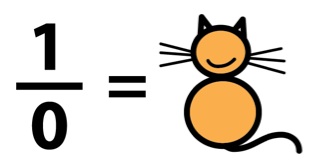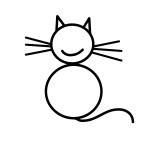There's a fraction too much fiction
The Age, 21 May 2012

All maths students are familiar with the eleventh commandment: Thou shalt not divide by zero. The prohibition on this mathematical sin is made crystal clear as soon as the number 0 is introduced. However, mathematicians are not always so obedient, and when they are forbidden from doing something they tend to ask “why not?”
But before we can contemplate division by 0 we need to understand division by less troublesome numbers, and that takes some thought. What, for example, is 36 divided by 12? The answer, of course, is 3. But why?
The reason is that 3 is the number that 12 has to be multiplied by to give 36: it is the solution X to the problem 12 x X = 36. So, division is defined in terms of a related multiplication problem. It is exactly an example of an inverse process of the kind we discussed recently.
That may seem a lot of fussing over simple stuff. However, what if we ask for 36 divided by 13? One might blithely write down 36/13 as the answer, but what does that actually mean? You may now have lost patience and wish to yell “You silly Maths Masters! It’s the fraction 36 over 13!” Yes, but …
The question is, what do we mean when we write an expression such as 36/13? What exactly is a fraction? If 36/13 simply means “36 divided by 13” then all we have is a useless, tautological answer to our division problem: “36 divided by 13 equals 36 divided by 13.”
In fact, the fraction 36/13 does not refer to anything like taking 36 and dividing it into 13 equal parts. It is not referring to the process of dividing 36 by 13, but rather the result of this division. That is, 36/13 is a number, in and of itself.
Which number? In effect, 36/13 is defined to be the solution of our original division problem. Recalling that division is just the inverse of multiplication, it means that 36/13 is defined to be the solution X to the problem 13 x X = 36.
At this stage, you’re probably either convinced that the Maths Masters are way too pedantic for their own good, or you’re beginning to doubt that anything about fractions is straight-forward. Well, pedantic or not, your Maths Masters are firmly convinced that fractions are very tricky numbers.
Why, for instance, can you perform the multiplication 3/4 x 8/5 by cancelling out a factor of 4, resulting in the answer of 6/5? The arithmetic of fractions is not that hard to do but it is pretty mysterious. And, even supposedly basic aspects of fractions can be confusing.
The situation is similar to the puzzles created by the introduction of negative numbers. That involved considering a whole new range of numbers and then hoping (and eventually confirming) that our familiar rules of arithmetic still hold true. The same is true for the introduction of fractions, but there are ways in which they are even more confusing.
The idea is that any time we have whole numbers A and B we can create a new number, a fraction, that we write as A/B. (Yes, yes, B is not allowed to be 0. At least for now …) However, a very confusing aspect of fractions is that different combinations of whole numbers can result in the same fraction: for example, 2/6 is the same number as 1/3. This can easily be forgotten, and we have previously indicated how such forgetfulness can lead to nonsense.
A related confusion is due to the fact that the word “fraction” is horribly ambiguous. We have used the word above to refer to the numbers being defined, the actual quantities. Your Maths Masters always try to use the word in that manner.
However, the word “fraction” is also often used to refer to the representation of the numbers, the result of taking two numerical symbols and putting a forward slash between them. The confusion between fractions (numbers) and fractional representations bedevils almost every discussion of the little troublemakers. Even documents expressly written to clarify fractions can confuse the two. And, predictably, the Australian Curriculum seemingly doesn’t even attempt to keep the two notions separate.
Confusions notwithstanding, fractions do make sense, and in the end we can happily and safely divide by whole numbers. Except for zero!
But now, mischief makers that we are, we can also begin to think about dividing by 0. What, for instance, would 1 divided by 0 be? We could simply write it as 1/0, but pretty clearly it’s going to be a new type of number, no ordinary fraction. So, the first thing to do is to come up with a symbol to represent it, and we have the ideal candidate:

Now we just have to check that our rules of arithmetic still work with this attractive new number. We’ll save that easy work for next week. Then, once all is checked, we’ll have our division by 0. Convinced?
Puzzle to ponder: Does 2/4 equal 1/2? Does 0.5 equal 1/2? Is 0.5 a fraction? What, if anything, is the numerator of a fraction?
Burkard Polster teaches mathematics at Monash and is the university's resident mathemagician, mathematical juggler, origami expert, bubble-master, shoelace charmer, and Count von Count impersonator.
Marty Ross is a mathematical nomad. His hobby is smashing calculators with a hammer.
Copyright 2004-∞ ![]() All rights reserved.
All rights reserved.